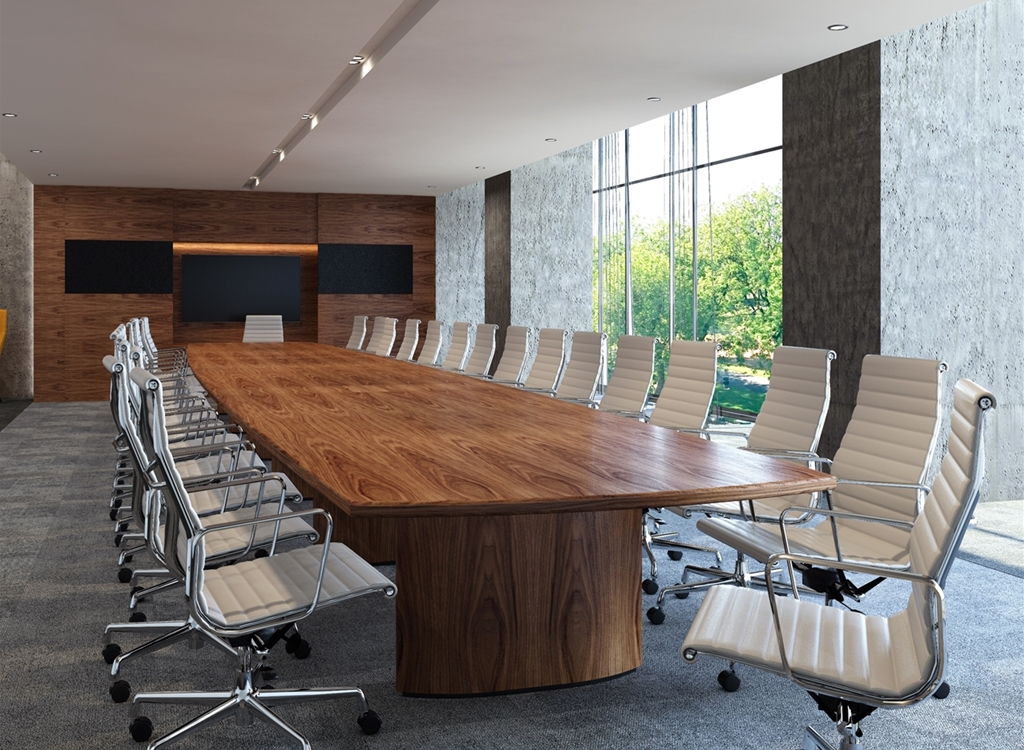In the modern corporate landscape, successful decision-making and problem-solving heavily rely on effective collaboration among board members. The boardroom table, as a central and symbolic element, plays a crucial role in boardroom table shaping the dynamics and atmosphere during board meetings. This article explores how the design and utilization of the boardroom table can empower and enhance collaboration among board members, leading to better outcomes and more successful organizations.
The Psychology of Space
The physical layout of the boardroom, including the design and placement of the table, can significantly influence the psychological dynamics during meetings. A circular or oval-shaped table fosters a sense of equality, as there is no distinct “head” of the table. This encourages board members to engage in open discussions and ensures that everyone’s voice is heard, promoting a culture of inclusivity and mutual respect.
Moreover, a table that allows board members to sit closer together can create a more intimate environment, facilitating informal interactions and building camaraderie. This, in turn, can enhance trust among board members, leading to more candid and productive discussions.
Technology Integration
In today’s digital age, technology plays a vital role in boardroom operations. The integration of technological tools into the boardroom table can significantly improve collaboration. For instance, interactive displays built into the table can allow board members to share and discuss documents in real-time, streamlining the decision-making process.
Furthermore, video conferencing capabilities can bridge geographical gaps, enabling remote members to participate actively. By leveraging technology effectively, the boardroom table becomes a hub of connectivity, ensuring that all board members are equally engaged regardless of their physical location.
Breaking Down Hierarchies
Traditionally, boardrooms were designed with a hierarchical arrangement, with the CEO or Chairman seated at the head of the table, implying a top-down decision-making approach. However, this layout can inadvertently stifle collaboration and hinder open communication.
Adopting a more egalitarian seating arrangement breaks down these hierarchical barriers, encouraging board members to express their ideas freely. When leaders and executives sit among their peers, they send a message of approachability and inclusivity, fostering an environment where innovative ideas can emerge from any level within the organization.
Facilitating Inclusivity
Effective collaboration involves ensuring that all board members feel valued and included. The boardroom table can play a pivotal role in achieving this goal. By implementing adaptive and ergonomic seating arrangements, the boardroom can cater to the diverse needs of its members, including individuals with disabilities.
Inclusive design not only benefits the board members directly but also sets a precedent for the organization’s commitment to diversity and inclusion as a whole. When every member feels comfortable and accommodated, they are more likely to contribute actively and confidently, ultimately leading to more robust decision-making.
The Role of the Chairperson
While the boardroom table can promote collaboration, the role of the chairperson is equally vital. An effective chairperson can set the tone for the meeting, ensuring that discussions remain focused and respectful. They can encourage quieter members to share their insights and mediate conflicts when they arise.
Furthermore, a skilled chairperson can balance the participation of all board members, preventing any one individual from dominating the office partitions conversation. This encourages a sense of shared ownership of the decision-making process, strengthening the collaborative spirit within the boardroom.
The boardroom table serves as the epicenter of collaboration and decision-making within an organization. By recognizing its significance and strategically leveraging its design, technology integration, and seating arrangements, companies can empower boardroom dynamics and drive more successful outcomes. An inclusive and egalitarian boardroom fosters an environment where every member’s voice is heard, and diverse perspectives are valued, paving the way for innovative solutions and sustainable growth.




